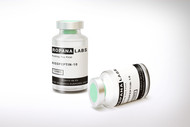Unlocking the Power of Kisspeptin 10: Exploring Science, Studies, and Benefits
4th Jun 2023
Introduction: In the realm of human physiology, the intricate interplay of hormones governs various bodily functions, including reproduction. Among these hormones, kisspeptin, specifically Kisspeptin 10 (KP-10), has emerged as a fascinating area of study. This blog post aims to delve into the scientific understanding, research studies, and potential benefits associated with KP-10.
Understanding Kisspeptin 10 (KP-10): KP-10 is a neuropeptide belonging to the family of kisspeptins, which are derived from the KISS1 gene. The hypothalamus, a key brain region, produces kisspeptin, acting as a vital regulator of reproductive physiology. Kisspeptin signaling occurs through the G protein-coupled receptor, GPR54, also known as Kisspeptin Receptor 1 (KISS1R).
Regulating the Hypothalamic-Pituitary-Gonadal (HPG) Axis: The hypothalamic-pituitary-gonadal (HPG) axis plays a pivotal role in the regulation of reproductive function. Kisspeptin neurons in the hypothalamus control the release of gonadotropin-releasing hormone (GnRH) from the hypothalamus, which subsequently stimulates the release of luteinizing hormone (LH) and follicle-stimulating hormone (FSH) from the pituitary gland. This intricate cascade ultimately influences gonadal function.
Role of Kisspeptin 10 in Puberty and Reproduction:
Numerous studies have highlighted the importance of KP-10 in the initiation and regulation of puberty. The pulsatile release of kisspeptin stimulates the pulsatile secretion of GnRH, a key trigger for the onset of puberty. KP-10 levels increase during adolescence, activating the HPG axis and initiating the physiological changes associated with puberty.
In addition to puberty, kisspeptin is involved in various reproductive processes. It helps regulate menstrual cycles in females, spermatogenesis in males, and influences ovulation and fertilization. The delicate balance of kisspeptin signaling is crucial for optimal reproductive health in both sexes.
Research Studies on Kisspeptin 10:
1. Kisspeptin 10 and Assisted Reproductive Technologies (ART): Studies have explored the potential of KP-10 to improve the success rates of assisted reproductive technologies. By enhancing GnRH release, KP-10 administration has shown promising results in stimulating ovarian responses, increasing oocyte retrieval rates, and improving pregnancy outcomes in women undergoing in vitro fertilization (IVF).
2. Kisspeptin 10 in the Treatment of Hypogonadotropic Hypogonadism (HH): HH is a condition characterized by deficient GnRH secretion, leading to impaired fertility. Research has indicated that exogenous administration of KP-10 can effectively stimulate the release of GnRH in HH patients, thus restoring normal reproductive function.
3. Kisspeptin 10 and Potential Therapeutic Applications: Beyond its role in reproductive health, KP-10 has demonstrated potential therapeutic applications in other areas. Studies have suggested its involvement in appetite regulation, stress response modulation, and cancer research, although further investigation is needed to establish these links conclusively.
Benefits and Future Perspectives: The exploration of kisspeptin and its derivative, KP-10, holds immense promise in the field of reproductive medicine. The administration of KP-10 in assisted reproductive technologies can improve outcomes, offering hope to individuals struggling with infertility. Moreover, the potential therapeutic applications of KP-10 extend beyond reproduction, opening doors to innovative treatments for various physiological and pathological conditions.
Where To Buy:

